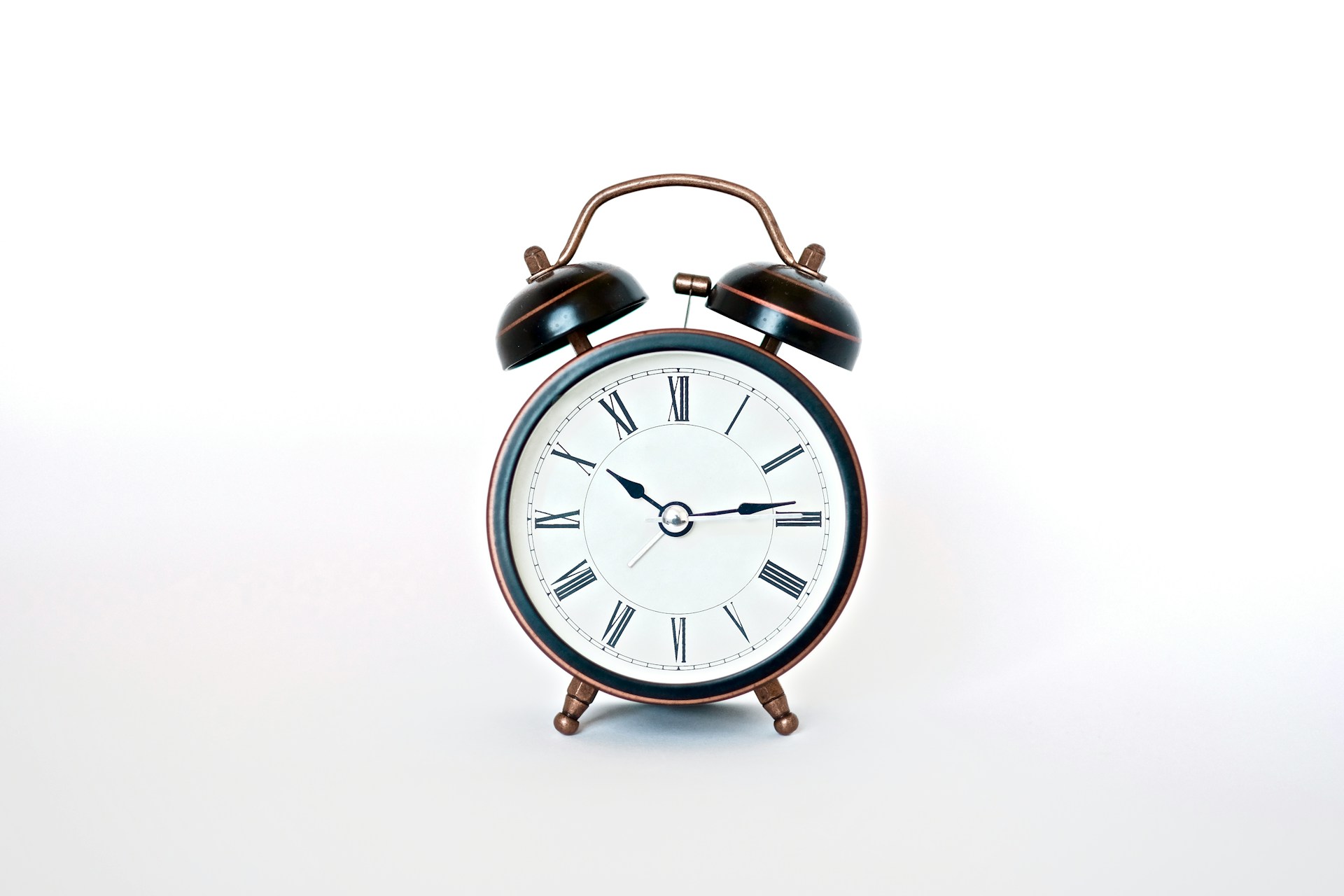Mindful journaling is a simple practice that can help you manage stress and improve sleep. By writing down your thoughts, you can ease anxiety, organize your mind, and prepare for restful sleep. Research shows that even five minutes of journaling before bed - whether creating a to-do list, practicing gratitude, or freewriting - can help you fall asleep faster and enjoy better quality rest. This practice works by calming racing thoughts, reducing cortisol levels, and promoting emotional balance.
To get started:
- Create a quiet space: Use a notebook and pen in a calm spot free from distractions.
- Set a consistent routine: Dedicate 5–15 minutes each night to journaling.
- Choose a technique: Try freewriting, gratitude journaling, or listing tasks for tomorrow.
Pairing journaling with mindfulness tools, like guided meditations or sleep stories, can further enhance relaxation. Apps like The Mindfulness App offer resources to combine these practices effectively. With patience and regularity, mindful journaling can become a powerful tool for better sleep and emotional well-being.
The Best Nighttime Journal Prompts
Benefits of Mindful Journaling for Better Sleep
Scientific research backs up the idea that mindful journaling can lead to better sleep. Taking a few moments to write before bed activates the brain's relaxation centers, helping to quiet those racing, anxious thoughts that often keep us awake. Here's how journaling can ease stress, speed up falling asleep, and promote emotional balance.
How Journaling Eases Stress and Anxiety
Putting your thoughts down on paper is like decluttering your mind. It helps organize chaotic thoughts and reduces the emotional weight they carry. Think of it as tidying up a messy desk - each worry gets its own space, leaving your mind freer to unwind. A study published in JMIR Publications found that regular journaling significantly lowers anxiety, depression, and distress. Writing about your stressors helps you acknowledge and release them, making it easier to relax when bedtime rolls around.
Falling Asleep Faster and Sleeping Better
In a sleep lab study, participants who spent just five minutes writing a to-do list before bed fell asleep much faster than those who wrote about tasks they had already completed. Interestingly, the more detailed the to-do list, the quicker they drifted off. This simple exercise helps organize thoughts and interrupts the mental loops that often delay sleep.
Beyond falling asleep faster, mindful journaling is linked with better overall sleep quality. It encourages deeper, more restorative rest. With improved sleep, you wake up feeling refreshed and better equipped to handle your emotions during the day, creating a positive cycle for your well-being.
Emotional Balance Through Reflection
Journaling also supports emotional health by offering a private space to process tough feelings. Writing about positive moments or practicing gratitude can shift your focus away from stress and reduce overthinking. This habit builds self-awareness and emotional resilience, both of which are essential for a calm and restful mind at bedtime. Over time, consistent journaling strengthens your ability to regulate emotions, setting the stage for peaceful, uninterrupted sleep.
How to Start a Mindful Journaling Practice
Starting a mindful journaling practice doesn’t require much - just a little time, basic supplies, and a routine that fits seamlessly into your evening. By following a few straightforward steps, you can turn journaling into a calming habit that not only enhances your bedtime routine but also improves your sleep.
Setting Up a Journaling Space
Choose a quiet spot that helps you unwind. It could be your bedside table, a comfy chair in your room, or even a cozy corner in the living room. The exact location doesn’t matter as much as ensuring it’s a space where you won’t be interrupted and can return to regularly.
Keep it simple: all you need is a notebook and a pen. Storing these together in your chosen spot removes any hassle and makes it easier to stick with your routine. Pick a notebook that feels inviting to use - something you’ll look forward to opening each evening.
To make the space even more relaxing, consider small, soothing touches. A soft bedside lamp can create a calming glow, while a warm blanket or a subtle, pleasant scent can help signal to your brain that it’s time to wind down. While not essential, these elements can make the experience feel more like a comforting ritual, helping your mind associate this space with relaxation and sleep preparation.
Building a Consistent Routine
The key to making journaling effective is consistency. Set aside the same time each night for your practice, ideally as part of your existing bedtime routine. This could be right after brushing your teeth, during your wind-down time, or the last thing you do before turning off the lights.
Start small - just 5 to 15 minutes is enough to ease into the habit without it feeling like a chore. Once it becomes second nature, you can extend the time if you feel like it, but even brief sessions can deliver noticeable benefits.
If you’re worried about forgetting, set a gentle reminder on your phone for the first couple of weeks. Over time, the habit will become automatic. A quiet, distraction-free environment will also help you stay consistent and make the practice more effective.
Reducing Distractions for Mindfulness
To get the most out of mindful journaling, it’s important to focus entirely on your thoughts. Digital distractions - like notifications or screens - can easily pull you out of the moment and back into the chaos of the day.
Stick to a physical journal and leave digital devices in another room. Writing by hand not only keeps distractions at bay but also engages parts of the brain that help with relaxation and mindfulness. This makes it easier to process your thoughts and ease any lingering stress or anxiety.
Let others in your household know that you need a few minutes of quiet during your journaling time. You don’t need to make a big deal out of it - just a quick mention that you’d appreciate minimal interruptions can go a long way. Even small disruptions can break the mindful state that makes journaling such a powerful tool for preparing your mind and body for sleep.
sbb-itb-bea8dce
Mindful Journaling Techniques for Sleep
If you're looking to calm your mind and prepare for a restful night, consider these three journaling techniques. They’re simple yet effective ways to ease mental tension and help your body transition to sleep.
Freewriting for Mental Clarity
Freewriting is all about letting your thoughts flow onto paper without overthinking or editing. It’s a way to unload the clutter in your mind, creating space for relaxation.
Set a timer for 5–10 minutes and write continuously. Don’t pause to correct mistakes or filter your thoughts. If you’re unsure what to write, jot down something like, “I don’t know what to write,” until your thoughts start to flow again. The goal isn’t perfection - it’s release.
You might end up writing about work stress, family concerns, or random events from your day. Sometimes, patterns in your thoughts will emerge, offering insights you hadn’t noticed before. Other times, you’ll simply feel lighter after emptying your mind onto the page.
Stress and anxiety can trigger cortisol release, which disrupts sleep cycles. Freewriting helps manage these emotions, giving your mind and body the chance to unwind naturally.
Once you’ve cleared your mind, consider shifting gears to gratitude journaling to cultivate a more positive outlook.
Gratitude Journaling for Positivity
Gratitude journaling is a simple yet powerful way to refocus your mind on the good things in your life. This shift in perspective can improve your mood and set the stage for better sleep.
Write down three to five specific things you’re grateful for from the day. Avoid vague statements and aim for details. For example, instead of saying, “I’m grateful for my family,” write something like, “I’m grateful my daughter called me today,” or “I’m grateful for the hug my partner gave me after work.” These specific moments make the exercise more meaningful and help your brain focus on positive emotions.
This practice trains your mind to notice the good, making it easier to end your day with peaceful, uplifting thoughts. By focusing on gratitude, you can create a mental environment that encourages relaxation and sleep.
To-Do Lists for Cognitive Relief
Sometimes, the biggest barrier to sleep is a racing mind filled with tomorrow’s responsibilities. Writing a to-do list before bed can help quiet this mental noise.
Research has shown that people who write out to-do lists at bedtime fall asleep faster than those who journal about tasks they’ve already completed. The reason? Writing down future tasks helps reduce anxiety about unfinished business, allowing your brain to let go of the mental rehearsal.
Focus your list on tomorrow’s tasks. Don’t worry about organizing them perfectly - just jot down what needs to be done. You can sort through the details in the morning. This simple act of writing shifts your mental load onto paper, signaling to your brain that it’s safe to relax and prepare for sleep.
Combining Mindful Journaling with Mindfulness Tools
Take your journaling routine to the next level by incorporating mindfulness tools into your nightly wind-down. Pairing journaling with practices like guided meditations or structured courses can create a more effective approach to improving sleep. These tools not only promote relaxation but also help you address both mental and physical aspects of preparing for rest.
Research shows that mindfulness meditation can reduce insomnia, fatigue, and depression more effectively than standard sleep education. When combined with journaling, these techniques form a powerful system to help you relax and process your thoughts before bed. Adding guided sessions or structured prompts can make this routine even more impactful.
Using Guided Meditations with Journaling
Start with a guided meditation to calm your mind, then move into journaling for focused reflection and emotional processing.
One great resource is The Mindfulness App, which offers over 500 tracks, including guided meditations and sleep stories tailored for bedtime. For example, you could begin with a 10-minute meditation to release the tension of the day, then transition into journaling. This approach helps you write from a more centered and peaceful state of mind.
Try this sequence: spend 5–10 minutes meditating, then dive into your journaling - whether it’s a gratitude list or jotting down tomorrow’s to-do items. The meditation helps relax your nervous system, while journaling provides a constructive outlet for your thoughts. Many people find this combination makes falling asleep much easier.
"The Mindfulness App is the best. I sleep much better after meditating in the evening and feel so much more rested in the morning!" - Sara from Sweden
Sleep stories are another excellent tool to pair with journaling. Once you’ve finished writing, listen to a calming narrative to guide your mind away from active thinking and toward rest. This seamless transition from reflection to relaxation can set the stage for a peaceful night’s sleep.
Finding Journaling Prompts and Courses
A consistent journaling practice becomes easier when you have structured guidance to keep it fresh and effective. The Mindfulness App offers a variety of prompts, courses, and techniques designed to enhance journaling for stress relief and better sleep.
For example, their mindfulness courses often include exercises that pair well with journaling, such as gratitude reflections, stress management techniques, or body awareness practices. These structured methods prevent your journaling from feeling repetitive and help you explore new ways to reflect.
With content available in 12 languages and a 4.8 out of 5 rating from over 56,000 reviews, the app provides reliable tools to support your practice. Plus, the 14-day free trial gives you full access to their premium library, so you can experiment with different meditation styles and courses to find what works best for you.
The beauty of this approach is its flexibility. Some people prefer to meditate before journaling, while others journal first to clear their mind before meditating. With so many tools available, you can customize your routine to fit your sleep challenges and personal preferences.
Over 6 million people have embraced this integrated approach, collectively logging more than 180 million mindful minutes. These numbers highlight how combining mindfulness tools with journaling can lead to better sleep and reduced stress over time.
Conclusion
Mindful journaling can be a powerful tool for improving sleep, especially when it comes to tackling nighttime restlessness, stress, anxiety, and racing thoughts. Techniques like gratitude journaling, freewriting, or creating to-do lists help clear mental clutter and set the stage for a peaceful night’s sleep.
The beauty of this practice lies in its simplicity - it doesn’t require fancy tools or special training. Just a few minutes of writing each night can make a noticeable difference. While some people feel immediate relief from overthinking, research suggests that the full benefits of mindful journaling often appear after several weeks or months of consistent effort. The secret? Patience and sticking with it. Over time, this nightly habit can lead to lasting improvements in both sleep quality and emotional balance.
If you’re new to journaling, start small. A short, focused session each evening can go a long way. Pick one approach that feels right for you - maybe jotting down three things you’re grateful for or listing tomorrow’s tasks. Remember, it’s not about perfection; it’s about consistency.
To take things a step further, consider pairing journaling with mindfulness tools like The Mindfulness App. This app offers guided meditations and sleep stories that complement your journaling practice, helping you shift from reflective writing to restful sleep. With a stellar 4.8 out of 5 rating from over 56,000 users and content in 12 languages, it’s a resource worth exploring for a calmer, more restful night.
FAQs
How does mindful journaling help lower stress hormones and improve sleep quality?
Mindful journaling is a powerful way to bring clarity and calm to your mind. By taking the time to reflect on your thoughts and emotions in an organized manner, you can ease the mental chaos that often fuels stress and anxiety. These feelings are frequently tied to higher levels of cortisol - the hormone your body releases during stressful situations.
Establishing a nightly journaling routine can work wonders. It provides a space to unload worries, helping you unwind and shift into a more relaxed state. This simple habit not only sets the stage for a more peaceful night’s sleep but can also, over time, improve your overall mental and emotional well-being.
How can I stick to a journaling routine, even when I’m tired or forgetful before bed?
Sticking to a journaling routine can feel more manageable by building simple, everyday habits. One easy approach is setting a daily reminder on your phone to write at the same time each evening. Keeping your journal and pen on your nightstand ensures they’re always within arm’s reach before bed. Feeling too tired? No problem - just jot down a quick thought or a couple of sentences. The key is consistency, not how much you write.
Another idea is to pair journaling with a soothing activity, like playing calming music or following a guided meditation. Apps such as The Mindfulness App provide features like sleep stories and mindfulness exercises. These can work alongside your journaling practice, making it an even more relaxing and effective way to wind down.
How can I combine mindful journaling and guided meditations to improve my sleep, and what’s the best way to structure my evening routine?
Combining mindful journaling with guided meditations can transform your evening routine into a calming ritual that eases stress and sets the stage for better sleep. Journaling gives you the space to reflect on your thoughts and emotions, while meditation helps quiet the mind and relax the body.
Here’s a simple way to incorporate this into your night: Dedicate 10–15 minutes before bed to journaling. You can write about things you’re grateful for, highlights from your day, or even unload any worries to clear mental clutter. Afterward, follow up with a guided meditation to deepen your relaxation and gently transition into sleep. Making this a habit can have a positive impact on both your emotional health and the quality of your rest.






